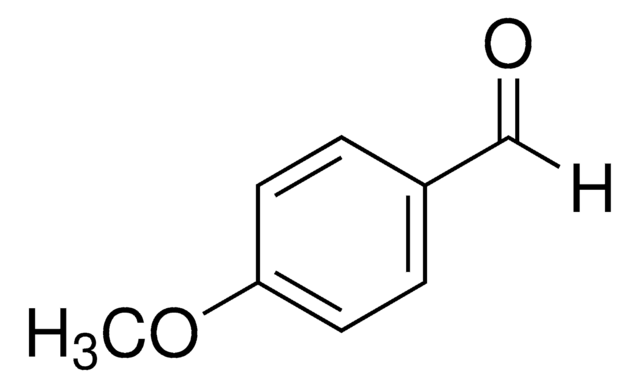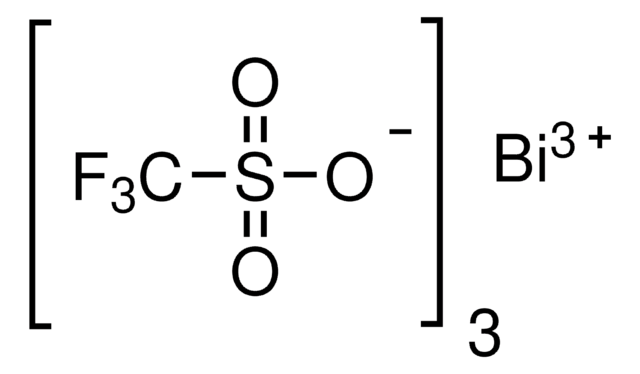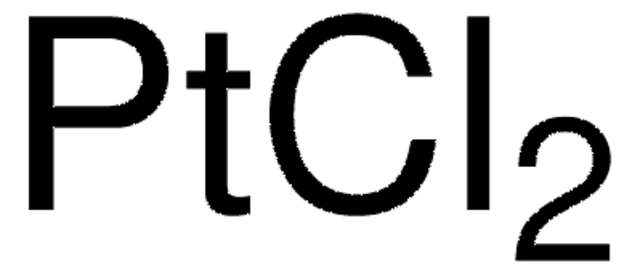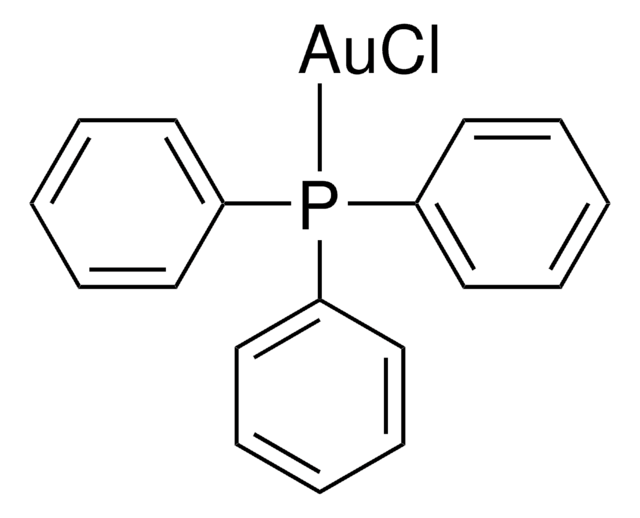推荐产品
等級
for analytical purposes
品質等級
化驗
99%
形狀
powder
反應適用性
reagent type: catalyst
core: gold
SMILES 字串
Cl[Au](Cl)Cl
InChI
1S/Au.3ClH/h;3*1H/q+3;;;/p-3
InChI 密鑰
RJHLTVSLYWWTEF-UHFFFAOYSA-K
正在寻找类似产品? 访问 产品对比指南
一般說明
氯化金(III)是一种具有单斜结构的路易斯酸。它是一种吸湿性和光敏性固体。它常用于掺杂有机导电化合物,以提高导电性。 它还是有机合成的催化剂,也是合成各种电化学应用的金纳米粒子的前体。
應用
氯化金(III)可用于:
- 作为掺杂剂,在过氧化物太阳能电池的PEDOT:PSS和ITO之间制造石墨烯保护层。通过保护ITO和收集空穴,它有助于提高光电转换效率。
- 作为绿色合成金纳米粒子的前体。它可以填补石墨烯中的缺陷,提高电流效率,同时不影响透射率。
- 作为绿色合成金纳米粒子的前体。
訊號詞
Warning
危險聲明
危險分類
Eye Irrit. 2 - Skin Irrit. 2 - STOT SE 3
標靶器官
Respiratory system
儲存類別代碼
11 - Combustible Solids
水污染物質分類(WGK)
WGK 3
閃點(°F)
Not applicable
閃點(°C)
Not applicable
個人防護裝備
dust mask type N95 (US), Eyeshields, Gloves
其他客户在看
Ligand-induced gold nanocrystal superlattice formation in colloidal solution.
Lin XM, et al.
Chemistry of Materials, 11(2), 198-202 (1999)
A comparative study of galvanic replacement reactions involving Ag nanocubes and AuCl2? or AuCl4?
Au L, et al.
Advanced Materials, 20(13), 2517-2517 (2008)
The crystal structure of gold(III) chloride.
Clark ES, et al.
Acta Crystallographica, 11, 284-288 (1958)
Synthesis and optical properties of cubic gold nanoframes
Au L, et al.
Nano Research, 1(6), 441-449 (2008)
Joy Sarkar et al.
Bioprocess and biosystems engineering, 35(4), 637-643 (2011-10-20)
The development of an eco-friendly and reliable process for the synthesis of gold nanomaterials (AuNPs) using microorganisms is gaining importance in the field of nanotechnology. In the present study, AuNPs have been synthesized by bio-reduction of chloroauric acid (HAuCl(4)) using
商品
Noble-Metal Nanostructures with Controlled Morphologies
Plasmonic nanoparticles have unique optical properties that can be tailored to suit a variety of applications in the biotechnology1–8 and electronics9–16 industries.
Global Trade Item Number
| 货号 | GTIN |
|---|---|
| 334049-500MG | 4061826737743 |
| 334049-5G | 4061835508631 |
我们的科学家团队拥有各种研究领域经验,包括生命科学、材料科学、化学合成、色谱、分析及许多其他领域.
联系客户支持













